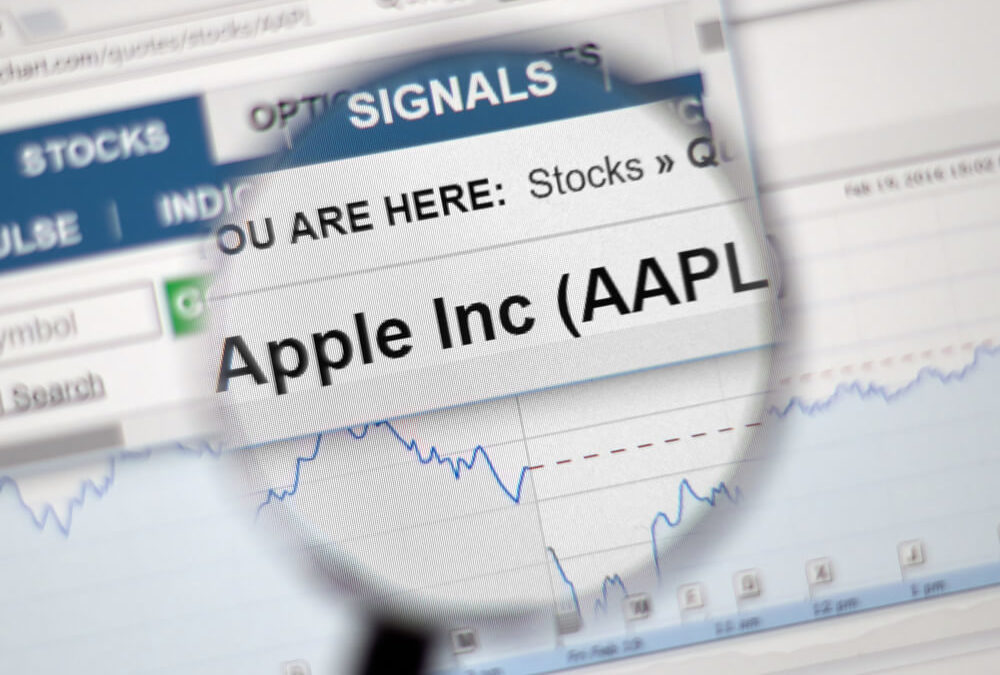The last few weeks have been rough for stock markets as a whole — and the coronavirus correction has been particularly rough on Apple’s valuation.
In the last four trading days, shares of the tech giant dropped nearly $20 from its Friday close to its Monday open.
That shed nearly $100 billion off the valuation of Apple Inc. (Nasdaq: AAPL). Shares dropped another 7.9% on Monday as big tech companies lost more than $320 billion in value in one day. Apple’s market capitalization is now hovering near $1.3 trillion.
To note, Monday was the worst day for U.S. stocks since the 2008 financial crisis. The Dow Jones Industrial Average fell nearly 8%. The S&P 500 dropped 7.6% and the Nasdaq tumbled 7.3% in the bloodbath for equities.
It’s just more mounting bad news for the maker of the iPhone, iPad and MacBook laptops.
Here’s What Started Apple’s Decline
Since June 2019, Apple shares enjoyed a 90.5% rise into February 2020.
Then came the coronavirus.
On Feb. 18. 2020, the company pulled its 2020 quarterly revenue guidance, citing a drop in iPhone supply coupled with a similar drop in demand for its products in China, where the coronavirus originated.
Since that announcement, Apple shares have plummeted more than 18% as mounting fears over the impacts of the virus, also known as COVID-19, grew.
But Why Is Apple’s Valuation Getting Hit So Hard?
Initially, the biggest reason Apple shares were getting hammered was because of the company’s reliance on China for both sales and products.
Apple’s Chinese manufacturing partner, Foxconn Technology Group, has production facilities in Chengdu and Shenzhen.
Those facilities can produce up to 6,000 units — iPhone and iPad — per day and employ nearly 350,000 workers.
Apple’s use of Chinese plants to mass-produce its products comes down to the fact that those facilities can meet the company’s demand faster.
Nearly 75% of Apple’s suppliers have at least one production facility in China while 22% have three or more there.
On the demand side, the biggest concern for Apple is the unknown of just how long the coronavirus will impact global markets, or how long that impact will last.
We’ve already seen a topsy-turvy reaction in U.S. markets as all three major indexes went from record highs in the middle of February to correction levels later in the month — where indexes fall 10% from their recent record highs.
The bottom line is Apple expects sales to fall simply because people aren’t in the mood to buy expensive tech products. To put it in context, Apple sold only 500,000 iPhones in China in February — a 60% drop from the same month a year ago.
What Happens From Here
Production delays are hurting supply while demand continues to slump.
As we suggested earlier, one thing that would save Apple is the rollout of new products — like a 5G-capable iPhone.
When 4G technology was rolled out globally in 2010, Apple product sales and revenue nearly doubled to more than $8 billion by the fourth quarter that year.
Apple’s revenue usually jumps in the first quarter following a new iPhone announcement. So, you can see that new phones with the latest tech equal huge revenue.
But there are potential delays in Apple’s timeline to release new products. In fact, the likelihood that the company can release a new 5G iPhone this September, as expected, is getting slimmer and slimmer as the virus continues to spread.
There are also expected delays in Apple’s release of a new, cheaper version of the iPhone SE model — expected for a spring 2020 release — according to Nikkei Asian Review.
While Apple shares experienced an uptick Tuesday, the stock fell back 3% Wednesday.
As production delays and sluggish sales continue, expect Apple to continue getting hit hard by the coronavirus.





